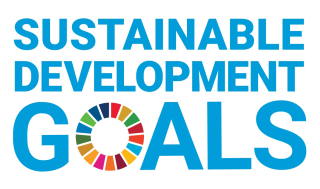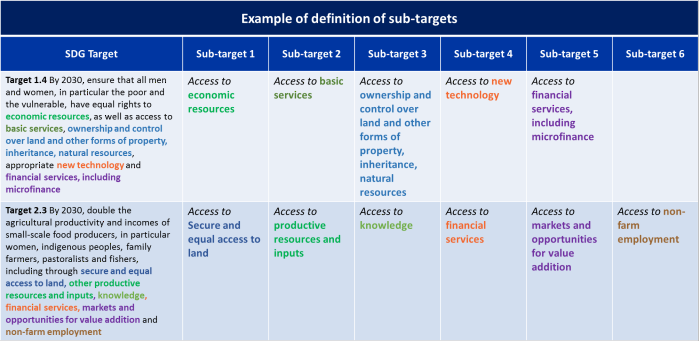
Posted by Lorena Rivero del Paso[1]
The 2030 Agenda for the Sustainable Development Goals (SDGs) was adopted more than five years ago, leaving less than ten years to achieve these goals. This was already demanding before the pandemic, now with the impact of COVID-19 on the global economy, it is even more challenging. There is a need for governments to step up and speed up implementation and to leverage all the instruments at their disposal to achieve their targets. Public budgets—while not the only tool for financing the SDGs—have a primary role in directing priorities from an economic, political and legal standpoint. Therefore, budgeting for SDGs, is one of the most important tools that governments can use.
Mexico was one of the early movers in this arena. In 2016, the government[2], in collaboration with the United Nations Development Program (UNDP), developed a methodology building on different public[3] finance instruments, which allows the SDGs to be integrated into the planning, monitoring and evaluation phases of the budget. While there is no standard methodology of budgeting for SDGs, some elements of the Mexican methodology are interesting for other countries, these include:
- Linking of planning instruments. In 2013, the Mexican government designed a structure to link budget programs to the National Development Plan using logical framework matrices. When the time came to link the budget and the SDGs, this previous reform was a natural enabler.
- Using a results-based management approach. In two ways:
- All line ministries participated in identifying the comparability of their performance indicators with SDGs indicators (tier I and II)[4]. This enabled ministries to know if the SDG indicators were already integrated into performance evaluation system, if any methodological adjustments were needed and if new indicators had to be added.
- The linking of budget programs with the logical framework matrices allowed ministries to capture not only the SDG’s strategic indicators, but also the activities and outputs—which generally have higher measurement frequency and facilitate timelier monitoring.
- Discerning sub-targets. Each SDG includes a set of targets, but even those targets usually include a myriad of specific objectives, as exemplified in the table below. The Mexican methodology breaks 102 of the 169 targets into “sub-targets”, which helps refine the analysis. Different programs can contribute to a part of a target, but this also opens the possibility that programs may not cover all aspects of a target, thus leaving parts of a target unattended by any program or policy.
- Identifying the specific activities and type of contribution. The methodology allows budget program managers to identify their part that contributes to each target (or sub-target) by using the administrative, functional and economic classifications. The program managers should also identify whether their contributions are direct or indirect.[5]
- Recognizing interlinkages. The SDGs are indivisible and interlinked by design. We need to recognize that an action can affect several objectives—directly or indirectly. In many budget tagging methodologies, the contribution is restricted to only one target (or one SDG), which does not foster policy coherence and coordination. The Mexican methodology entails identifying all contributions that one program can have.[6]
- Cohesive part of the budget process. Since 2017, the Ministry of Finance integrated the methodology in the budget circular, making it part of the annual budget formulation process.
- Integration to the financial management information systems (FMIS). Both the budget preparation module of the FMIS and the module for performance indicators were adapted to support the process.
- Transparency and open data. The results are presented in the Budget Statement and a summary is included in the Citizen’s Budget. Additionally, the whole dataset is published in open data.
Results and challenges
Linking public budgets to the SDGs, should be more than a mere identification process. While a good identification process is an important first step, budgeting for SDGs implies that the information is used for strategic and procedural decision-making. Therefore, consolidating the use of the information along the different stages of the budget cycle is a relevant challenge. Additionally, the recognition of “negative contributions” will be an important asset to develop complex interlinked networks.
One of the main concerns with long-term planning is the changes in priorities that come with changes in political administrations. In Mexico, even though provisions to link national planning to the SDGs were incorporated in the Planning Law in 2018, these aspirations were not explicitly integrated in the new National Development Plan 2019-2024. However, at a technical level, the integration of SDGs with the budget cycle instruments (program budgeting and performance evaluation) has kept the link alive.
In 2020, to help mobilize resources for the SDGs, Mexico became the first country to issue a Sovereign Sustainable Development Goals (SDGs) Bond. This seven-year bond for USD 890 million, is supported by the link of the SDGs to the budget.
[1] Lorena Rivero del Paso is a Technical Assistance Advisor at the Fiscal Affairs Department of the IMF. She was previously part of the Ministry of Finance of Mexico, leading the team developing the budgeting for SDGs effort.
[2] The Ministry of Finance and the SDG National Committee, which was overseen by the Office of the Presidency, led this work.
[3]The summary of the methodology can be consulted in English through: https://www.transparenciapresupuestaria.gob.mx/work/models/PTP/Presupuesto/Documentos_anteriores/mexico_sdg.pdf
[4] SDG Indicators are classified into Tier 1 indicators that are conceptually clear, with international standards and data regularly produced. The difference with Tier 2 indicators is that data is not regularly produced. Tier 3 indicators do not have a clear methodology and/or sources and were not used in Mexico.
[5] When the program generates conditions that contribute to the target but does not address it directly.
[6] An additional type of contribution that was originally part of the methodology but not yet implemented was the identification of positive or negative contributions, which would have allowed recognizing trade-offs and co-benefits among the actions. This is important for many of the targets, but particularly to those related to the environment.
Note: The posts on the IMF PFM Blog should not be reported as representing the views of the IMF. The views expressed are those of the authors and do not necessarily represent those of the IMF or IMF policy.







